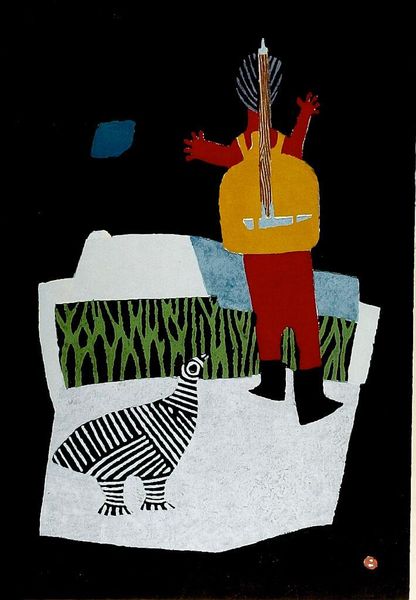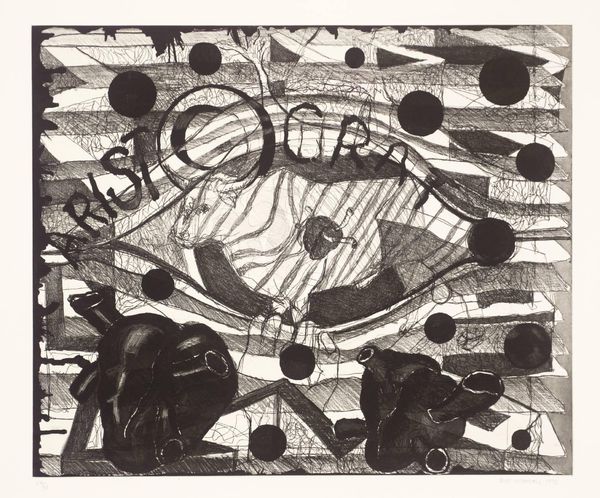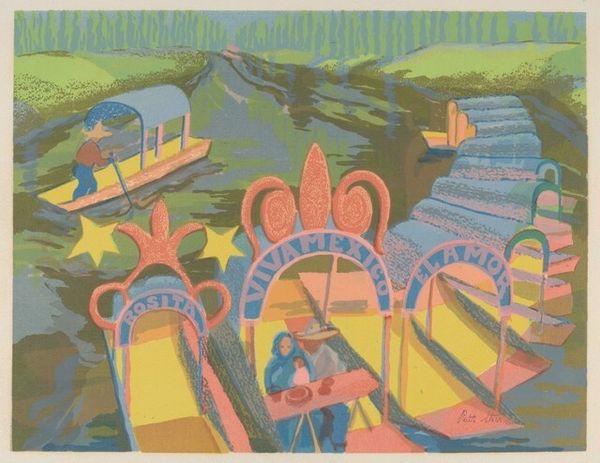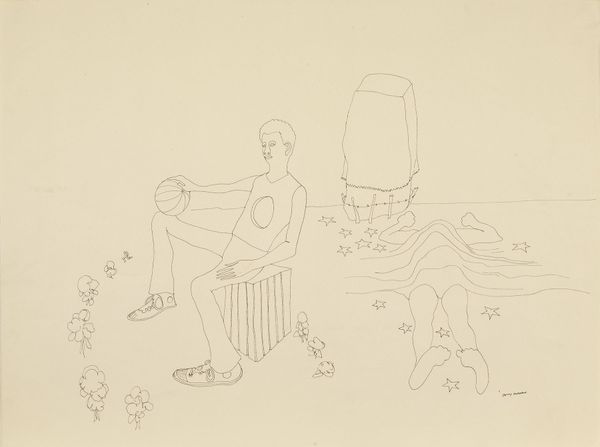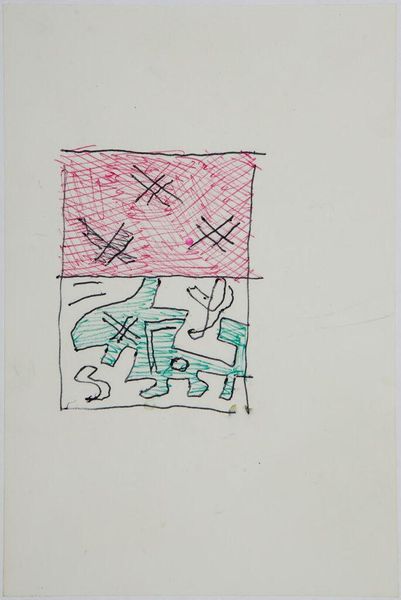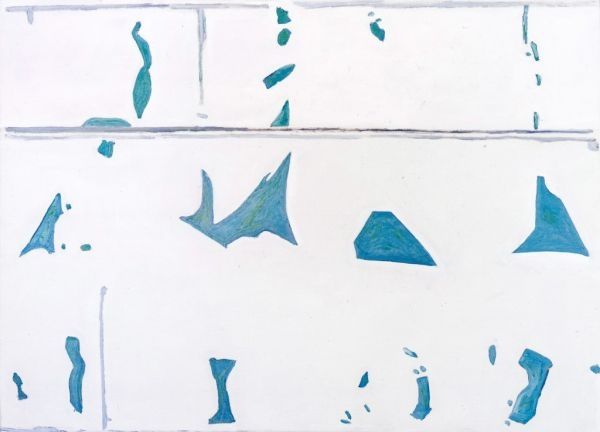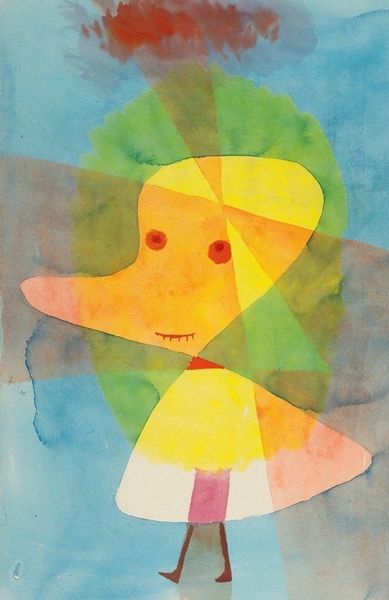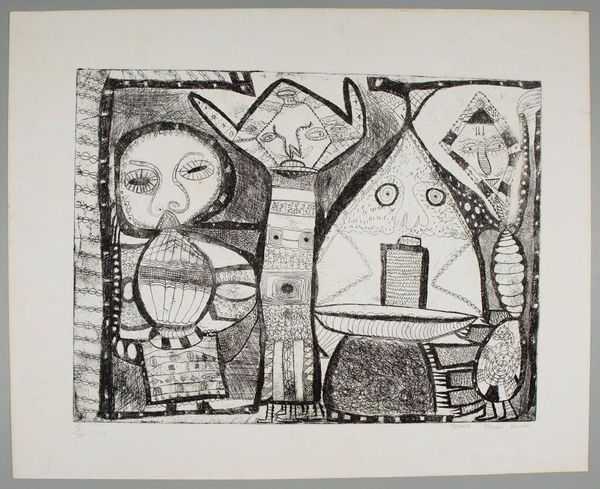
graphic-art, print
#
graphic-art
#
contemporary
# print
#
pop art
#
figuration
#
pop-art
#
cartoon style
Copyright: Walter Battiss,Fair Use
Editor: Here we have Walter Battiss’ graphic print, “Rock Artist.” The figure’s posture strikes me – arms outstretched as if crucified, but they’re resting on…rocks? What do you see in this piece? Curator: I see a fascinating commentary on the role of the artist and the act of creation. Battiss was deeply interested in indigenous art forms, especially rock art. Notice how the figure, rendered in this earthy red, seems almost fused with the land. Editor: Yes, and those blue rock-like forms on either side are covered in symbols! Curator: Exactly. Those aren't just decorations; they're a visual language, perhaps referencing ancient San rock engravings. The figure holding the stylus suggests the artist is a conduit, translating and reinterpreting that ancient knowledge for a contemporary audience. It’s important to think about how Battiss, as a white South African artist, engaged with these traditions during apartheid. Does it honour or appropriate? Editor: That raises an important question about cultural appropriation versus appreciation. Is Battiss attempting to decolonize art by elevating indigenous forms, or is he inadvertently perpetuating a colonial gaze? Curator: It’s a tension inherent in his work. He's grappling with South Africa's complex identity and its relationship to its pre-colonial past. It is like he’s inviting us to contemplate the ethics of representation and the power dynamics at play when one culture interprets another. The use of Pop Art aesthetic flattens this out in some way. It almost invites critique. Editor: I hadn’t considered that reading of his practice. The bright colours and cartoon-like style don't distract from, but maybe add to the complex politics embedded in the composition. Curator: It makes you think about the role of art in shaping cultural narratives and challenging dominant ideologies, doesn’t it? Editor: It definitely does. It is very complicated.
Comments
No comments
Be the first to comment and join the conversation on the ultimate creative platform.

